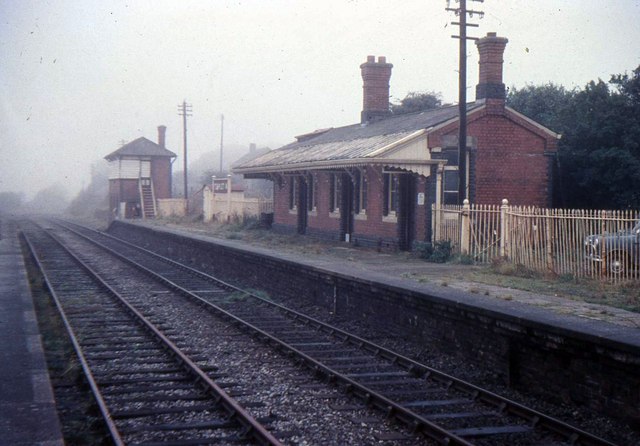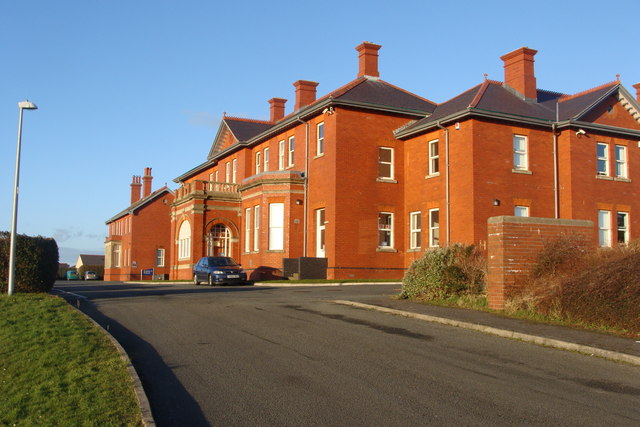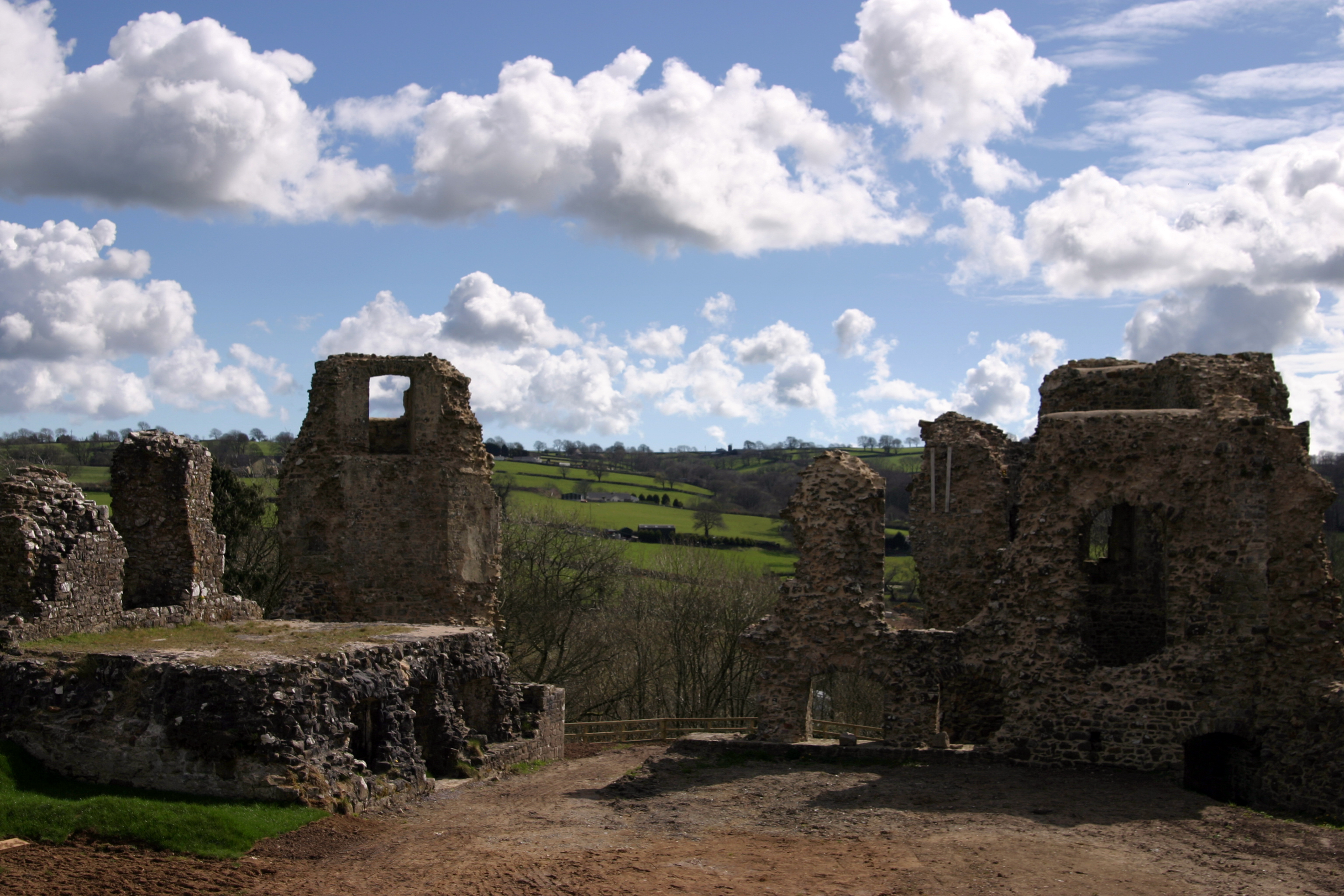|
Narberth Rural District
Narberth Rural District was a rural district in the administrative county of Pembrokeshire, Wales from 1894 to 1974, covering an area in the east of the county. Origins The district had its origins in the Narberth Poor Law Union, which had been created in 1837, covering Narberth itself and a large surrounding rural area. A workhouse to serve the union was built about a mile south of the town of Narberth in 1838–9, in the parish of Narberth South. The building later became known as Allenbank. In 1872 sanitary districts were established, giving public health and local government responsibilities to the existing boards of guardians for the rural parts of their poor law unions that were not already covered by an urban authority. As there were no urban authorities within the Narberth Poor Law Union, the Narberth Rural Sanitary District covered the same area. Under the Local Government Act 1894, rural sanitary districts became rural districts from 28 December 1894. The town of ... [...More Info...] [...Related Items...] OR: [Wikipedia] [Google] [Baidu] |
Rural District
Rural districts were a type of local government area – now superseded – established at the end of the 19th century in England, Wales, and Ireland for the administration of predominantly rural areas at a level lower than that of the Administrative county, administrative counties.__TOC__ England and Wales In England and Wales they were created in 1894 (by the Local Government Act 1894) along with Urban district (Great Britain and Ireland), urban districts. They replaced the earlier system of sanitary districts (themselves based on poor law unions, but not replacing them). Rural districts had elected rural district councils (RDCs), which inherited the functions of the earlier sanitary districts, but also had wider authority over matters such as local planning, council house, council housing, and playgrounds and cemeteries. Matters such as education and major roads were the responsibility of county councils. Until 1930 the rural district councillors were also poor law gu ... [...More Info...] [...Related Items...] OR: [Wikipedia] [Google] [Baidu] |
Templeton, Pembrokeshire
Templeton (Welsh: ''Tredeml'') is a village and community in Pembrokeshire, Wales. The population of the community was 943 in 2011. The built-up area had a population of 627. History Early history The placename Templeton may derive from “The Templar's Farm” or (“Tun”). It is possible that the Knights Templar had some form of religious house here before their possessions were taken over by the Knights Hospitallers, which had a commandery at nearby Slebech, which, by 1282 passed to the Mortimers, Lords of Narberth. In 1282 Templeton was referred to as "Villa temparil" which means the “Vil” or settlement of the Templars and "Villa Templarorium Campestris" – the vil of the Templars in the fields. In 1283 there was also a reference to “Burgesses”. These burgesses were "de vento" - "of the wind" meaning they were not property owners within the settlement but were permitted to come in and out of trade on a regular basis. Burgesses at Templeton are again recorded i ... [...More Info...] [...Related Items...] OR: [Wikipedia] [Google] [Baidu] |
Local Government Act 1972
The Local Government Act 1972 (c. 70) is an Act of the Parliament of the United Kingdom that reformed local government in England and Wales on 1 April 1974. It was one of the most significant Acts of Parliament to be passed by the Heath Government of 1970–74. Its pattern of two-tier metropolitan and non-metropolitan county and district councils remains in use today in large parts of England, although the metropolitan county councils were abolished in 1986, and both county and district councils have been replaced with unitary authorities in many areas since the 1990s. In Wales, too, the Act established a similar pattern of counties and districts, but these have since been entirely replaced with a system of unitary authorities. Elections were held to the new authorities in 1973, and they acted as "shadow authorities" until the handover date. Elections to county councils were held on 12 April, for metropolitan and Welsh districts on 10 May, and for non-metropolitan distri ... [...More Info...] [...Related Items...] OR: [Wikipedia] [Google] [Baidu] |
Bloomfield House - Geograph
Bloomfield may refer to: People * Bloomfield (surname) Places Australia * Bloomfield, Queensland, a town and locality in the Shires of Cook and Douglas * Bloomfield River, in Queensland Canada * Bloomfield, Carleton County, New Brunswick * Bloomfield, Kings County, New Brunswick * Bloomfield, Newfoundland and Labrador * Bloomfield, Ontario * Bloomfield, Prince Edward Island ** Bloomfield Provincial Park United Kingdom * Bloomfield (Bangor suburb), Northern Ireland * Bloomfield, Belfast, an electoral ward of East Belfast, Northern Ireland United States * Bloomfield, Arkansas, in Benton County * Bloomfield, California * North Bloomfield, California, former name Bloomfield * Bloomfield, Connecticut * Bloomfield (St. Georges, Delaware), a historic home listed on the National Register of Historic Places * Bloomfield, Indiana, a town in Greene County * Bloomfield, Jay County, Indiana, an unincorporated community * Bloomfield, Spencer County, Indiana, an unincorporated community * B ... [...More Info...] [...Related Items...] OR: [Wikipedia] [Google] [Baidu] |
Urban District (Great Britain And Ireland)
In England and Wales, Northern Ireland, and the Republic of Ireland, an urban district was a type of local government district that covered an urbanised area. Urban districts had an elected urban district council (UDC), which shared local government responsibilities with a county council. England and Wales In England and Wales, urban districts and rural districts were created in 1894 (by the Local Government Act 1894) as subdivisions of administrative counties. They replaced the earlier system of urban and rural sanitary districts (based on poor law unions) the functions of which were taken over by the district councils. The district councils also had wider powers over local matters such as parks, cemeteries and local planning. An urban district usually contained a single parish, while a rural district might contain many. Urban districts were considered to have more problems with public health than rural areas, and so urban district councils had more funding and greater power ... [...More Info...] [...Related Items...] OR: [Wikipedia] [Google] [Baidu] |
Local Government Act 1894
The Local Government Act 1894 (56 & 57 Vict. c. 73) was an Act of the Parliament of the United Kingdom that reformed local government in England and Wales outside the County of London. The Act followed the reforms carried out at county level under the Local Government Act 1888. The 1894 legislation introduced elected councils at district and parish level. The principal effects of the act were: *The creation a system of urban and rural districts with elected councils. These, along with the town councils of municipal boroughs created earlier in the century, formed a second tier of local government below the existing county councils. *The establishment of elected parish councils in rural areas. *The reform of the boards of guardians of poor law unions. *The entitlement of women who owned property to vote in local elections, become poor law guardians, and act on school boards. The new district councils were based on the existing urban and rural sanitary districts. Many of the l ... [...More Info...] [...Related Items...] OR: [Wikipedia] [Google] [Baidu] |
Board Of Guardians
Boards of guardians were ''ad hoc'' authorities that administered Poor Law in the United Kingdom from 1835 to 1930. England and Wales Boards of guardians were created by the Poor Law Amendment Act 1834, replacing the parish overseers of the poor established under the old poor law, following the recommendations of the Poor Law Commission. Boards administered workhouses within a defined poor law union consisting of a group of parishes, either by order of the Poor Law Commission, or by the common consent of the parishes. Once a union was established it could not be dissolved or merged with a neighbouring union without the consent of its board. Each board was composed of guardians elected by the owners and ''bona fide'' occupiers of land liable to pay the poor rate. Depending on the value of the property held, an elector could cast from one to three votes. Electors could nominate proxies to cast their vote in their absence. Where property was held by a corporation or company, its g ... [...More Info...] [...Related Items...] OR: [Wikipedia] [Google] [Baidu] |
Sanitary Districts
Sanitary districts were established in England and Wales in 1872 and in Ireland in 1878. The districts were of two types, based on existing structures: *Urban sanitary districts in towns with existing local government bodies *Rural sanitary districts in the remaining rural areas of poor law unions. Each district was governed by a sanitary authority and was responsible for various public health matters such as providing clean drinking water, sewers, street cleaning, and clearing slum housing. In England and Wales, both rural and urban sanitary districts were replaced in 1894 by the Local Government Act 1894 by the more general rural districts and urban districts. A similar reform was carried out in Ireland in 1899 by the Local Government (Ireland) Act 1898. England and Wales Sanitary districts were formed under the terms of the Public Health Act 1872. Instead of creating new bodies, existing authorities were given additional responsibilities. The sanitary districts were crea ... [...More Info...] [...Related Items...] OR: [Wikipedia] [Google] [Baidu] |
South Pembrokeshire
South Pembrokeshire ( cy, De Sir Benfro) was one of six local government districts of Dyfed, Wales from 1974 to 1996. Creation The district was formed on 1 April 1974 under the Local Government Act 1972, from the following parts of the administrative county of Pembrokeshire: *Narberth Rural District * Narberth Urban District * Pembroke Municipal Borough (which included Pembroke Dock) *Pembroke Rural District *Tenby Municipal Borough The map shows the district as defined above. However, in 1981, the communities of Bletherston, Clarbeston, Llandeilo Llwydarth, Llandissilio West, Llangolman, Llanycefn, Llys y Fran, Maenclochog, Mynachlog-ddu, New Moat and Vorlan were transferred to Preseli district. Premises The council was based at Llanion Park at Pembroke Dock. The building had been built in 1904 as part of the Llanion Barracks, and had been acquired by the former Pembroke Borough Council in the early 1970s to serve as its headquarters, just a couple of years before that coun ... [...More Info...] [...Related Items...] OR: [Wikipedia] [Google] [Baidu] |
Narberth, Pembrokeshire
Narberth ( cy, Arberth) is both a town and a community in Pembrokeshire, Wales. It was founded around a Welsh court and later became a Norman stronghold on the Landsker Line. It became the headquarters of the hundred of Narberth. It was once a marcher borough. George Owen described it in 1603 as one of nine Pembrokeshire "boroughs in decay". In 2011, the population was 2,150, of which a third are Welsh-speaking. Narberth is close to the A40 trunk road and is on the A478. Narberth railway station is on the main line from Swansea. The community includes the village of Crinow. Etymology The Welsh name of the town, ', is a compound of ' "on, against" + ' "hedge" (cf. Perth in Scotland). The phrase ' "in Narberth" was rebracketed when borrowed into English, giving the present-day English name, Narberth. History In the Iron Age, there was a defended enclosure to the south of the current town centre on Camp Hill. Narberth was founded around a Welsh court, but later became ... [...More Info...] [...Related Items...] OR: [Wikipedia] [Google] [Baidu] |
Wales
Wales ( cy, Cymru ) is a Countries of the United Kingdom, country that is part of the United Kingdom. It is bordered by England to the Wales–England border, east, the Irish Sea to the north and west, the Celtic Sea to the south west and the Bristol Channel to the south. It had a population in 2021 of 3,107,500 and has a total area of . Wales has over of coastline and is largely mountainous with its higher peaks in the north and central areas, including Snowdon (), its highest summit. The country lies within the Temperateness, north temperate zone and has a changeable, maritime climate. The capital and largest city is Cardiff. Welsh national identity emerged among the Celtic Britons after the Roman withdrawal from Britain in the 5th century, and Wales was formed as a Kingdom of Wales, kingdom under Gruffydd ap Llywelyn in 1055. Wales is regarded as one of the Celtic nations. The Conquest of Wales by Edward I, conquest of Wales by Edward I of England was completed by 1283, th ... [...More Info...] [...Related Items...] OR: [Wikipedia] [Google] [Baidu] |



